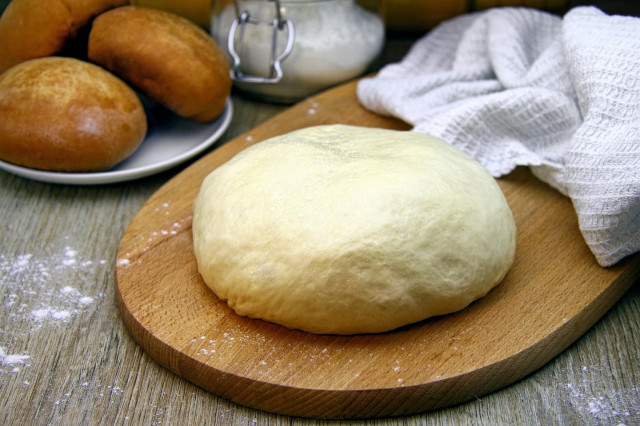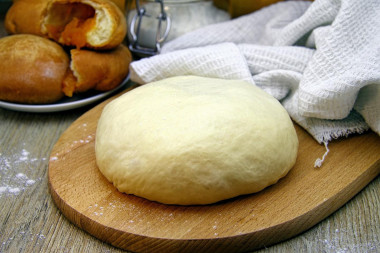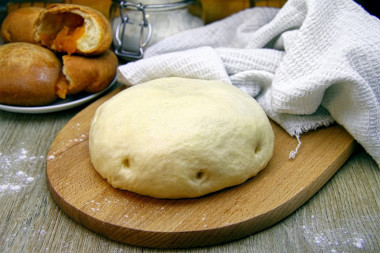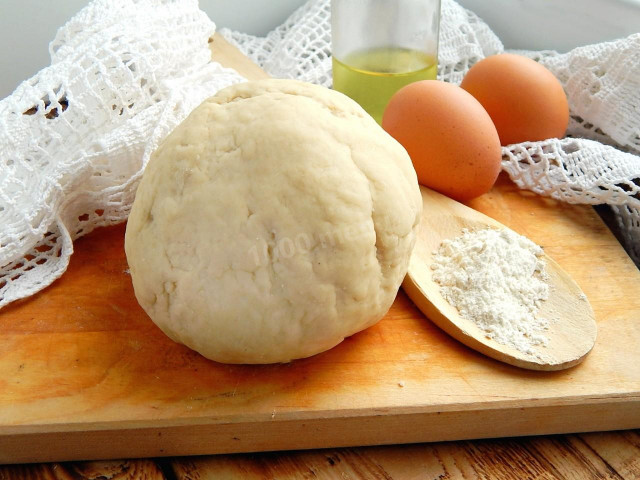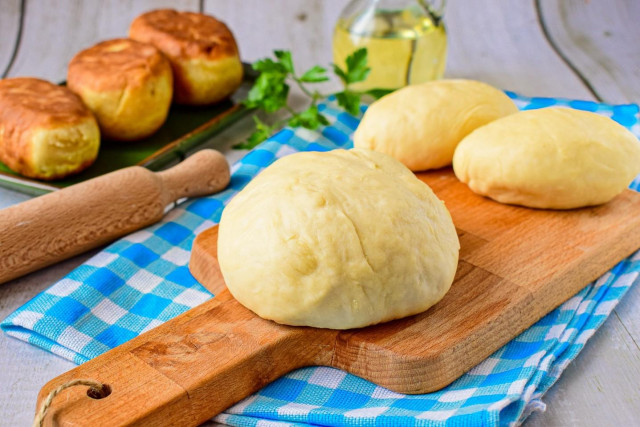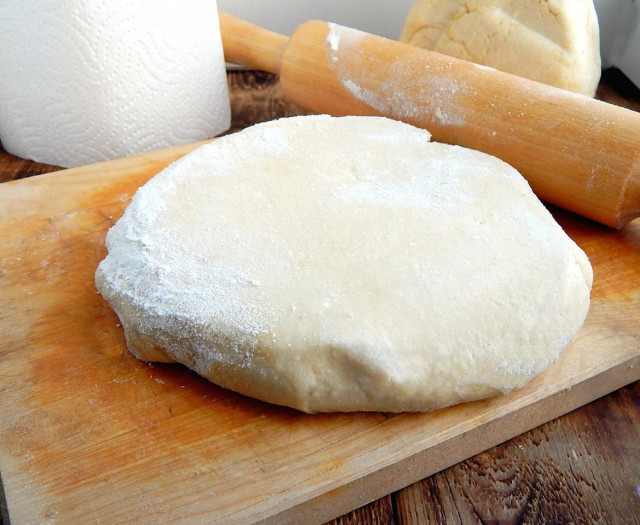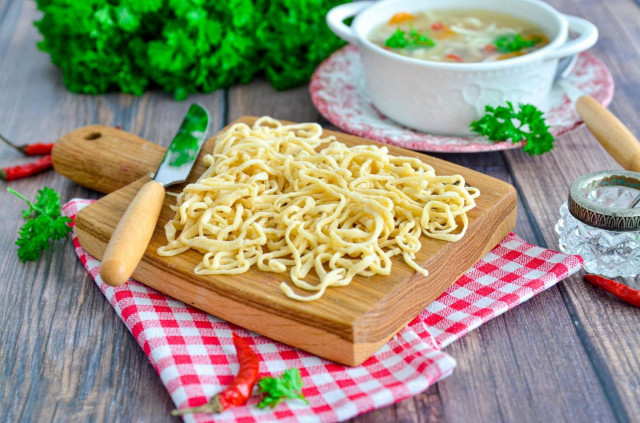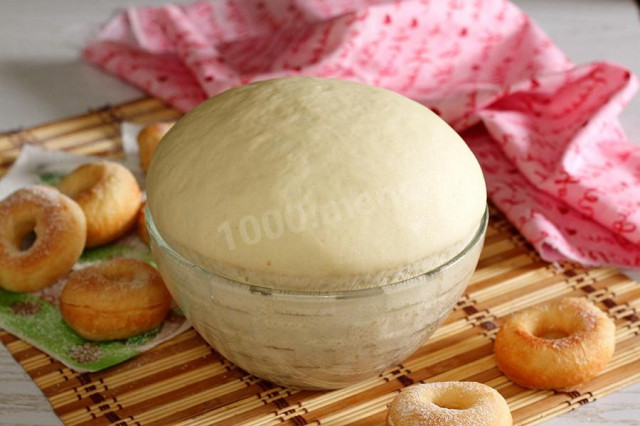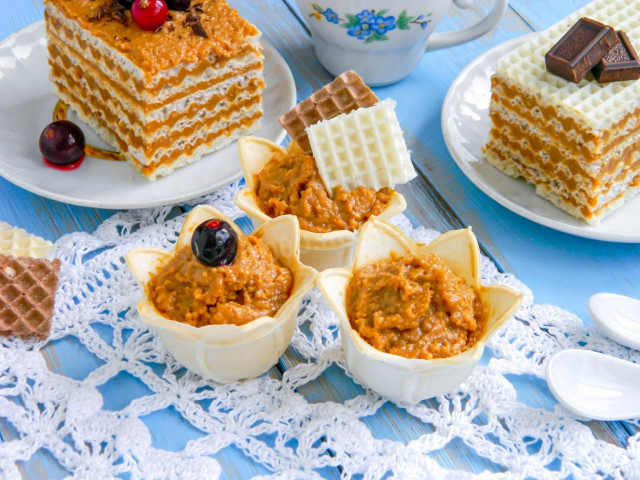Composition / ingredients
Step-by-step cooking
Step 1:
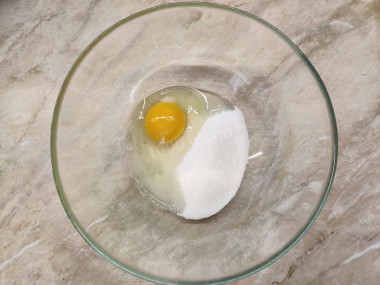
Wash the chicken egg under a stream of warm water. Eggs need to be washed before cooking to protect themselves from bacteria such as salmonella. Beat the egg into a deep bowl. Add sugar and a pinch of salt to improve the taste of the pies. Whisk these ingredients with a whisk until light bubbles form.
Step 2:
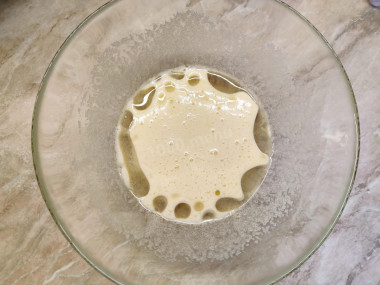
Pour in refined vegetable oil (odorless). With it, the dough will become smoother, and during kneading it will not stick much to your hands.
Step 3:
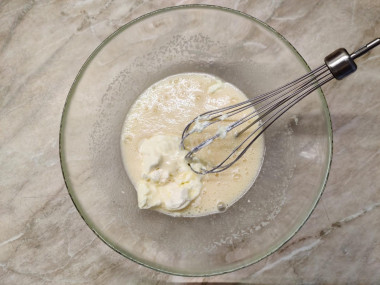
Add the main muffin - soft butter. It should be at room temperature. That is, very soft, but not liquid. In order to achieve this state, the oil is taken out of the refrigerator in advance and left for about thirty minutes at room temperature. Stir the mixture with a whisk.
Step 4:
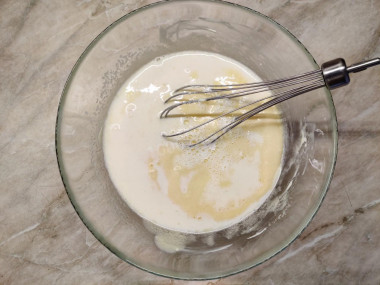
Then pour in the warm milk. I chose milk with a fat content of 2.5%. It is better not to take too fat milk so that the dough can come up well and rise. The temperature of the milk can be determined by touch. The hand should be warm, but not hot.
Step 5:
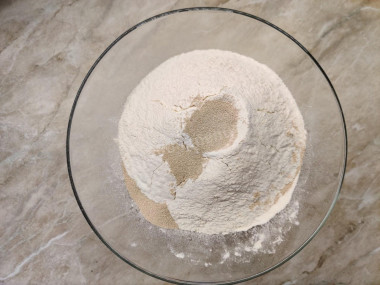
Sift the premium wheat flour through a sieve first once, and then a second time. Add dry fast-acting yeast and mix. Double sifting of flour is designed to increase the softness of any yeast baking. Yeast must be fresh! Before starting work, make sure that their shelf life is normal.
Step 6:
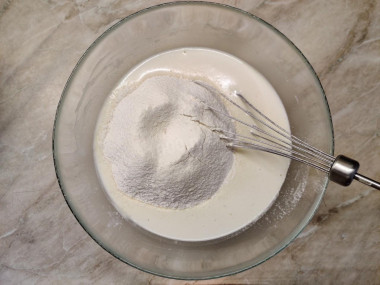
Combine the dry and liquid mixture and start kneading the dough. First with a whisk, and then with your hands. Please note that the amount of flour you have may differ from mine. That is, perhaps you will take more or less flour. Therefore, focus on the consistency of the dough.
Step 7:
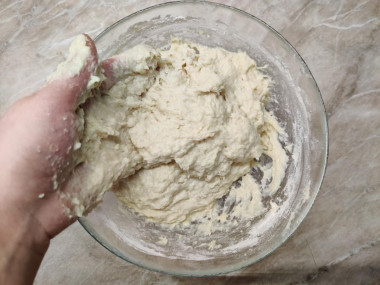
At first it may seem that the dough is liquid, too sticky to the hands. But you need to knead for at least 15 minutes!
Step 8:
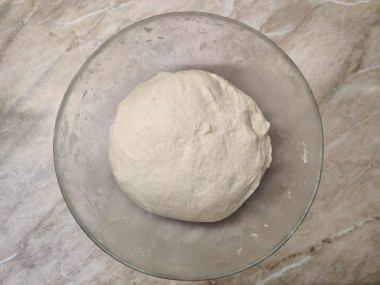
During this time, gluten will be released from the flour, and the dough will become smooth and elastic. It's hard to believe, but between step 7 and 8 I didn't add a single gram of flour! Just 20 minutes of time between them and very tired hands :) Cover the dough with a towel and leave it to come up for half an hour in a warm place. Then you need to knead the dough with your hands and leave it warm again for half an hour. After that, the dough is ready for forming, proofing and baking pies.
I always take flour and dry fast-acting yeast from the same brands that I trust. And, so far, they have never let me down. Therefore, to save time, I often use a non-paired method of making yeast dough. That is, I mix yeast immediately with flour, as described here.
But, unfortunately, all manufacturers are different, as are their products... No one has managed to come up with a universal recipe yet.
Therefore, for the correct consistency of the dough, someone may need a little less, and someone - a little more milk or flour, respectively. The benchmark is always the consistency of the dough and its long kneading.
This butter dough rises beautifully. It's a pleasure to work with him!
I got 12 soft and ruddy pies with apricot jam. I didn't even pre-lubricate them with yolk on top.
Bon appetit!
--------------------
Article to help:
Wheat flour. Secrets and nuances of use
Caloric content of the products possible in the composition of the dish
- Whole cow's milk - 68 kcal/100g
- Milk 3.5% fat content - 64 kcal/100g
- Milk 3.2% fat content - 60 kcal/100g
- Milk 1.5% fat content - 47 kcal/100g
- Concentrated milk 7.5% fat content - 140 kcal/100g
- Milk 2.5% fat content - 54 kcal/100g
- Chicken egg - 157 kcal/100g
- Egg white - 45 kcal/100g
- Egg powder - 542 kcal/100g
- Egg yolk - 352 kcal/100g
- Ostrich egg - 118 kcal/100g
- Whole durum wheat flour fortified - 333 kcal/100g
- Whole durum wheat flour, universal - 364 kcal/100g
- Flour krupchatka - 348 kcal/100g
- Flour - 325 kcal/100g
- Granulated sugar - 398 kcal/100g
- Sugar - 398 kcal/100g
- Butter 82% - 734 kcal/100g
- Amateur unsalted butter - 709 kcal/100g
- Unsalted peasant butter - 661 kcal/100g
- Peasant salted butter - 652 kcal/100g
- Melted butter - 869 kcal/100g
- Salt - 0 kcal/100g
- Sunflower oil - 898 kcal/100g
- Refined sunflower oil - 899 kcal/100g
- Dry yeast - 410 kcal/100g

